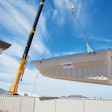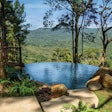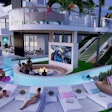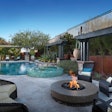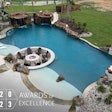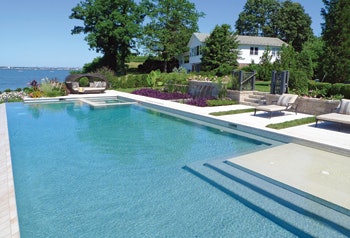
For years now, I’ve taken the view that aquatic design — a field in which I would include pools, spas, and also ponds, streams, waterfalls, fountains, marine exhibits, Asian gardens, water parks and constructed wetlands — should be considered both an emerging art form and hopefully someday an academic discipline.
Even back when I first started writing for this industry in 1989 at the tender age of 29 (my how time flies), it was obvious that creating bodies of water designed for human immersion and/or decoration requires a working knowledge of a diverse set of technical disciplines including geology, structural engineering, hydraulics, materials science, electricity and electronics, chemistry and heating.
That’s quite a list, and when you factor in color, texture, finish materials, architectural style and history, graphic presentation and landscape design, it all amounts to a field in which mastery requires both considerable technical and artistic chops.
If that doesn’t qualify as an art form, frankly, I don’t know what does.
One of the things that other creative fields have that ours is lacking, however, is a tradition of master influences, those seminal figures that have defined and advanced the arts and crafts of their chosen profession to the point of influencing generations to follow.
Consider the field of architecture, where the list of seminal influences reaches from Leonardo da Vinci and Michelangelo to Louis Sullivan, Frank Lloyd Wright, Walter Gropious and scores of others. Landscape architecture similarly can look to the works of Capability Brown, Frederick Law Olmstead, Calvert Vaux, Lawrence Halprin and Roberto Burle Marx.
So it begs the question, who belongs on the aquatics industry’s list of influential figures?
My hunch is that for the most part, with a few big exceptions, the creative masters that have influenced aquatic design have come from outside the pool and spa industry. An example would be the great house architect John Lautner, a Frank Lloyd Wright protégé who went on to create remarkable works of organic contemporary architecture that often featured extremely daring applications of water, including a project in Los Angeles that includes what many consider the first vanishing edge in the Western Hemisphere.
As well, the aforementioned Roberto Burle Marx would also qualify for his visionary use of water in the landscape as would visionaries such as Halprin, Ricardo Legorreta and Luis Barragan, all of whom made tremendous use of water in their designs.
In terms of contemporary swimming pools, meaning essentially the 20th Century onward, one name seems to come up time and time again when gauging influence — the great Thomas Dolliver Church.
Personally, I can count at least a dozen landscape and aquatic design professionals off the top of my head I’ve talked to who cite Church as something akin to the father of the residential swimming pool and the modern residential backyard. To see his influence one need only look at what is arguably his most famous work, the Donnell Garden, a residence located in Sonoma, Calif., completed in 1948 in collaboration with Halprin.
Church believed fiercely in the concept that outdoor spaces should be made with human participation in mind. He designed with simple lines and textures, combining exterior elements with the home’s architecture at every turn. He was an early advocate of outdoor living spaces and dining areas and his designs were always sensitive to the surrounding environment.
The Donnell Garden is particularly interesting from an aquatics perspective in that it features a free-form pool, which at the time was extremely rare. In fact, many believe this single pool gave rise to the kidney-shaped pool and in general the way pools would become essential to upscale residential environments. There are those who believe the Donnell Garden is the most influential residential pool of the 20th Century, even ahead of the majestic pools at Hearst Castle or the widely copied Playboy Mansion West pool in Los Angeles.
His Gardens Are For People is considered one of the great books about residential exterior spaces. It is essential reading for anyone working the residential landscape.
For all of those reasons and many more, Church almost certainly belongs on the list of creative spirits whose vision pointed to the highest ambitions of aquatic design.
Comments or thoughts on this article? Please e-mail [email protected].

































